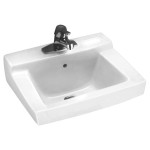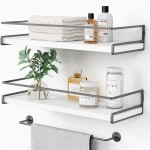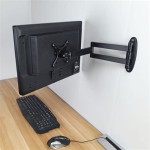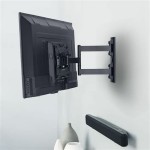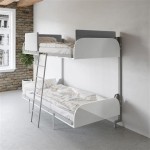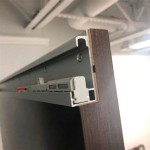Strong Adhesives for TV Wall Mounts: A Comprehensive Guide
Mounting a television on the wall has become a common practice to save space, enhance viewing angles, and create a modern aesthetic. While traditional mounting methods rely heavily on screws and anchors, the use of strong adhesives provides an alternative approach, particularly in situations where drilling is undesirable or impractical. This article explores the principles, types, applications, and considerations involved in using strong adhesives for TV wall mounts. It is important to note that adhesive mounting may not be suitable for all situations, and careful evaluation is required before implementation.
Understanding the Principles of Adhesive Bonding
Adhesive bonding relies on the intermolecular forces between the adhesive and the surfaces being joined, referred to as the adherends. These forces can be broadly categorized into two main types: mechanical interlocking and specific adhesion. Mechanical interlocking involves the adhesive penetrating into the microscopic pores and irregularities of the adherend surfaces, creating a physical grip. Specific adhesion, on the other hand, involves chemical interactions, such as van der Waals forces, hydrogen bonds, and electrostatic attraction, between the adhesive molecules and the adherend molecules.
The strength of an adhesive bond depends on several factors, including the type of adhesive, the surface preparation of the adherends, the application technique, and the environmental conditions. The adhesive must be selected based on its compatibility with the materials being joined and its ability to withstand the expected loads and stresses. Surface preparation is crucial to ensure that the adhesive can properly wet and adhere to the surfaces. This typically involves cleaning the surfaces to remove dirt, grease, and other contaminants. The application technique involves applying the adhesive evenly and in the correct thickness. Environmental conditions, such as temperature and humidity, can also affect the adhesive bond. High temperatures can weaken the adhesive, while high humidity can interfere with the curing process.
The load-bearing capacity of an adhesive bond is determined by the adhesive's shear strength, tensile strength, and peel strength. Shear strength is the ability of the adhesive to resist forces parallel to the bond line. Tensile strength is the ability of the adhesive to resist forces perpendicular to the bond line. Peel strength is the ability of the adhesive to resist forces that attempt to separate the bond by peeling it apart. When selecting an adhesive for a TV wall mount, it is important to consider all three of these strength values to ensure that the adhesive can withstand the weight of the television and any additional forces that may be applied to it.
Types of Strong Adhesives for TV Wall Mounts
Several types of strong adhesives are available for use in TV wall mounts, each with its own unique properties and advantages. The selection of the appropriate adhesive will depend on the specific application requirements, including the type of wall material, the weight of the television, and the desired level of permanence.
Construction Adhesives: These are general-purpose adhesives that are designed for bonding a wide variety of materials, including wood, drywall, concrete, and metal. They typically have a high initial tack, which helps to hold the television in place while the adhesive cures. Construction adhesives are available in both solvent-based and water-based formulations. Solvent-based adhesives offer higher strength and water resistance, but they also release volatile organic compounds (VOCs) that can be harmful to human health. Water-based adhesives are more environmentally friendly, but they may not be as strong or water-resistant.
Epoxy Adhesives: These are two-part adhesives that consist of a resin and a hardener. When mixed together, the resin and hardener undergo a chemical reaction that cures the adhesive into a strong, durable bond. Epoxy adhesives offer excellent strength, chemical resistance, and temperature resistance. They are often used in demanding applications where high performance is required. However, epoxy adhesives can be more difficult to apply than other types of adhesives, and they may require special equipment or techniques.
Polyurethane Adhesives: These are one- or two-part adhesives that cure through a reaction with moisture in the air. Polyurethane adhesives offer good flexibility, impact resistance, and vibration damping. They are often used in applications where the bond needs to be able to withstand movement or vibration. Polyurethane adhesives can be more expensive than other types of adhesives, but they offer a good balance of performance and ease of use.
Acrylic Adhesives: Acrylic adhesives offer a good balance of strength, flexibility, and weather resistance. They are often used in outdoor applications where the bond needs to be able to withstand exposure to the elements. Acrylic adhesives are available in both liquid and tape forms. Acrylic adhesive tapes are particularly convenient for use in TV wall mounts, as they can be easily applied and provide a uniform bond thickness.
Hybrid Adhesives: These are adhesives that combine the properties of two or more different types of adhesives. For example, a hybrid adhesive may combine the strength of an epoxy adhesive with the flexibility of a polyurethane adhesive. Hybrid adhesives offer the best of both worlds, providing a high level of performance and versatility.
When selecting an adhesive for a TV wall mount, it is important to consult the manufacturer's specifications to ensure that it is compatible with the specific materials being joined and that it meets the required strength and performance criteria. It is also important to follow the manufacturer's instructions for surface preparation, application, and curing.
Key Considerations for Adhesive TV Wall Mounts
Before using adhesives for TV wall mounting, several factors need careful evaluation. Ignoring these considerations could lead to a failed mount, potentially damaging the television and the wall.
Wall Material Compatibility: Different wall materials possess varying surface characteristics and porosities. Some adhesives may bond effectively to drywall but perform poorly on concrete or brick. Porous surfaces require adhesives with gap-filling capabilities and the ability to penetrate the surface for a secure bond. Smooth, non-porous surfaces may require surface priming or roughening to enhance adhesion. It's crucial to verify the adhesive's compatibility with the specific type of wall material. Consider the presence of paint or wallpaper, as these can weaken the adhesive bond. It might be necessary to remove these coverings to expose the bare wall surface for optimal adhesion.
Weight Capacity and Shear Strength: The weight of the television is a critical factor in adhesive selection. The chosen adhesive must possess a shear strength sufficient to support the television's weight over an extended period. Check the adhesive's specifications for its maximum load-bearing capacity and ensure it exceeds the weight of the television by a significant margin. Factor in a safety margin to account for potential variations in adhesive application or environmental conditions. Dynamic loads, such as accidental bumps or vibrations, can significantly increase the stress on the adhesive bond, so the safety margin is especially important.
Surface Preparation and Application Techniques: Proper surface preparation is paramount for a successful adhesive bond. The surfaces must be clean, dry, and free of any contaminants, such as dust, grease, or loose particles. Clean both the wall and the mounting bracket with a suitable cleaner, such as isopropyl alcohol, to remove any residue. Roughening the surfaces slightly with sandpaper can improve adhesion by increasing the surface area available for bonding. Apply the adhesive evenly and in the recommended thickness. Avoid applying too much adhesive, as this can weaken the bond by creating a thick layer of adhesive between the surfaces. Follow the manufacturer's instructions for application techniques, such as applying pressure to the surfaces while the adhesive cures.
Environmental Conditions and Curing Time: Temperature and humidity can significantly affect the adhesive curing process. Some adhesives require specific temperature ranges for optimal curing. High humidity can interfere with the curing of some adhesives, while low humidity can cause others to dry out too quickly. Monitor the environmental conditions during the curing process and adjust as needed. Allow the adhesive to cure for the recommended amount of time before mounting the television. Premature loading can weaken the bond and lead to failure. Ventilation is crucial during the curing process, especially with solvent-based adhesives, to prevent the buildup of harmful vapors.
Long-Term Durability and Maintenance: Adhesive bonds can degrade over time due to environmental factors, such as temperature fluctuations, humidity, and UV exposure. Regularly inspect the adhesive bond for any signs of weakness, such as cracking, peeling, or discoloration. If any signs of weakness are detected, take immediate action to reinforce the bond or replace the adhesive. Consider using a sealant or protective coating to protect the adhesive bond from environmental damage. Avoid applying excessive force or stress to the mounted television, as this can weaken the adhesive bond over time.
Alternatives and Safety Considerations: Adhesive mounting is not suitable for all situations. In some cases, traditional screw-based mounting methods may be a safer and more reliable option. Consider the long-term implications of using adhesive mounting, such as the difficulty of removing the mount without damaging the wall. Always consult with a qualified professional before attempting to mount a television using adhesives, especially if you are unsure about the structural integrity of the wall or the suitability of the adhesive. Wear appropriate safety gear, such as gloves and eye protection, when working with adhesives. Follow the manufacturer's safety instructions and dispose of adhesive waste properly.
In conclusion, while strong adhesives can offer a viable alternative to traditional screw-based mounting for televisions, a thorough understanding of adhesive principles, careful selection of the appropriate adhesive, and diligent adherence to application guidelines are essential for a safe and successful installation. Factors such as wall material, television weight, environmental conditions, and long-term durability must be carefully considered before proceeding with adhesive mounting.

Rubber Bond Tv Cord Hider Cable Protector Strong Self Adhesive Wall Cover Low Profile Management Concealer

Scotch 1 In X 66 Yds Permanent Double Sided Extreme Mounting Tape 414dc Sf

Hang S Tv No Stud Diy Wall Mount Holds Up To 150 Lbs 19 In And 100 Tvs Hstv100 The Home

Ametoys Screwless Wall Mount Replacement For Eero 6 Wifi Router Holder Strong Adhesive Easy To Install No Tools Drilling Needed
Does Anyone No How To Mount A Tv On The Wall Without Drilling Holes In Quora

Desk Mount Adhesive Tv Wall L Hole Mounting Rack Base With Self For Secure Placement

Greenfix Double Sided Mounting Tape 19 7ft 2 Rolls Nano Heavy Duty Stick Clear Wall Safe Adhesive

How To Mount A Flat Screen Tv On Wall The Home

Vertical 3 Wall Mount And Headphone Hanger Holder Adhesive Screw I Brainwavzaudio Ca

Hypigo Fixed Wall Tv Mount 1 06 Lb No Adhesive Wal Com

